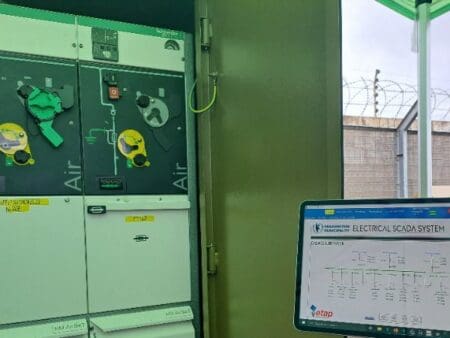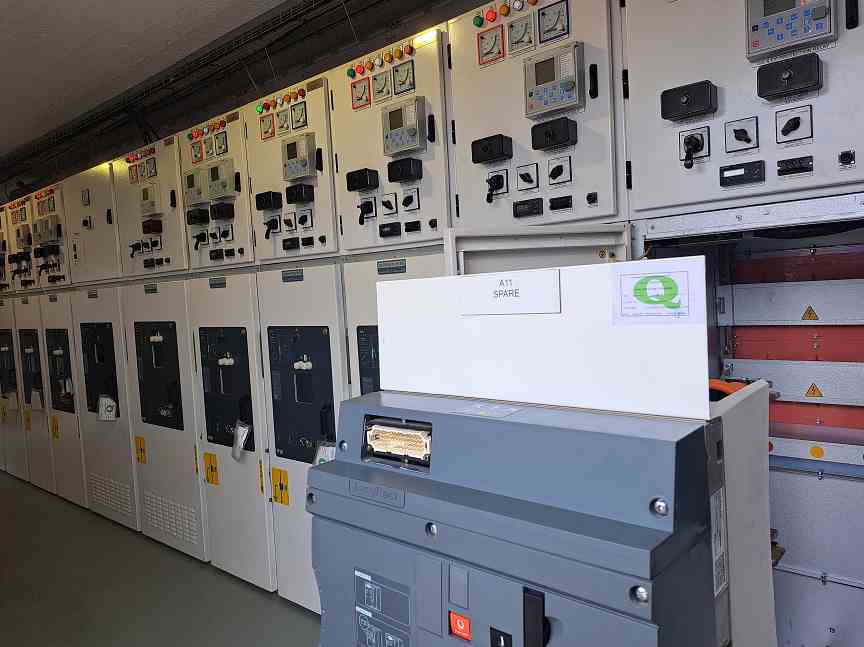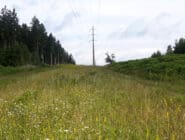
A district outside of Cape Town has recently installed SF6-free switchgear, the first installation of its kind in Africa.
The Drakenstein Municipality project is an ongoing collaboration with clean tech developer Schneider Electric and system integrator partner, Altek.
Located 30 minutes outside of Cape Town, the Municipality has installed Schneider Electric’s RM AirSeT switchgear with pure air technology and digital connectivity.
Installed in February 2023 at the Dalwes substation, the new technology is free from SF6 gas (Sulphur hexafluoride) and its associated greenhouse gas (GHG) emissions.
Shifting away from SF6
The municipality’s choice to install the switchgear, forms part of their drive for clean growth and electricity distribution.
Vladimir Milovanovic, vice president of power systems for Schneider Electric Anglophone Africa: “Drakenstein Municipality is undoubtedly leading the way in establishing a modern, digitised infrastructure that enables it to remotely monitor equipment like the RM AirSeT switchgear which in turn allows for expanded network visibility, as well as preventative and proactive maintenance and problem solving.”
Added Alderman Conrad Poole, executive mayor of Drakenstein Municipality: “This project comes at a time when South Africa faces immense energy challenges. Being an early adopter of this pioneering technology will enable us to share lessons learnt with our peers.”
Mayor Poole here is referring to rolling blackouts in the country, known as loadshedding, due to the breakdown of TSO Eskom’s generating units.
Have you read:
Why the energy transition cannot compromise on SF6
Air – the outstanding sustainable alternative to SF6
Identified by the Kyoto Protocol as one of six GHGs needed to be reduced, SF6, a regulated fluorinated gas, is typically found in traditional gas-insulated switchgear and is 23,500 times more potent than CO2.
The gas currently has a special exemption for use in electrical distribution across geographies. However, as alternatives become more readily available, countries and territories are considering measures to restrict its use. For example, earlier this year in March, the European Parliament voted to accelerate the phase down of SF6 and other fluorinated gases (F-gases) on the EU market.
Digital connectivity – SCADA update
Aside from the move to greener distribution, the switchgear is also being touted by the project partners as providing the municipality with heightened digital connectivity.
The municipality, serving a population of 305,281, will gradually replace its current 25-year-old SCADA (supervisory control and data acquisition) monitoring system with Schneider Electric’s ETAP system, which they describe as a model-driven electrical SCADA software solution.
Three of the municipality’s 36 substations are already online in the system. In the 2023/24 financial year, eight more substations will be brought online.

Explaining the system during the launch event was Altek managing director Alvin Naidoo, who stated the necessity of using SCADA: “We once looked at SCADA as a ‘nice to have’ but now it’s a way of life… [Through SCADA] we improve the efficiency of our network, reduce fault finding times and improve response times.”
According to Naidoo, the importance of the system comes in when looking at the use of data for consumption management:
“Based on simulation data, the system has features for load forecasting. We take simulation data, data that’s available in the repositories on the SQL (structured query language) and essentially amalgamate them and create load forecasting potential.”
Additionally, Schneider Electric states that the switchgear includes condition-based maintenance features, feeding data from its sensors to local field tools/apps and analytics tools, which can be hosted in the cloud or on premise, depending on requirements.
It also provides continuous condition monitoring and controls to check the quality of power connections, identify and isolate faults, as well as self-healing capabilities for reduced downtime.








